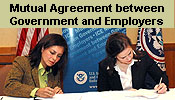
Search
Info Updates
National Threat Advisory
Elevated
![]()
Significant Risk of Terrorist Attacks
Report Suspicious Activity:
1-866-DHS-2-ICE1-866-347-2423
Information for families of ICE detainees:
Contact InformationInternational Students
I-17 Frequently Asked Questions
1. Background. The Student and Exchange Visitor System (SEVIS) and the Student and Exchange Visitor Program (SEVP)
-
1.1 What is SEVIS?
1.2 What is SEVP?
1.3 What is the purpose of SEVIS?
1.4 Who are F and M nonimmigrant students?
SEVIS is a web-based system for maintaining information on international nonimmigrant students and exchange visitors to the United States. It is the core technology for the Department of Homeland Security (DHS) in this critical mission. SEVIS implements Section 641 of the Illegal Immigration Reform and Immigrant Responsibility Act (IIRIRA) of 1996, which requires DHS to collect current information from nonimmigrant students and exchange visitors continually during their course of stay in the United States. In addition, the Uniting and Strengthening America by Providing Appropriate Tools Required to Intercept and Obstruct Terrorism Act of 2001 (USA PATRIOT Act; Public Law 107-56, amended Section 641) mandated implementation of SEVIS prior to January 1, 2003.
SEVP is the DHS program that administers SEVIS. It ensures that government agencies have essential data related to nonimmigrant students and exchange visitors to preserve national security. SEVP provides approval and oversight to schools authorized to enroll F and M nonimmigrant students and gives guidance to both schools and students about the requirements for maintenance of their status.
1.3 What is the purpose of SEVIS?
SEVIS tracks and monitors nonimmigrant students and exchange visitors. If accepted by a school certified by SEVP, foreign students may be admitted to the United States in the appropriate F or M nonimmigrant status. If accepted for participation in a Department of State (DOS) verified exchange visitor program, exchange visitors may be admitted to the United States (U.S.) in J nonimmigrant status. Records of these alien admissions and continued participation in these educational programs are maintained in SEVIS. Further, SEVIS enables SEVP to assure proper reporting and recordkeeping by schools and exchange visitor programs, thereby ensuring data currency and integrity. SEVIS also provides a mechanism for student and exchange visitor status violators to be identified so that appropriate enforcement is taken (i.e., denial of admission, denial of benefits, or removal from the United States).
1.4 Who are F and M nonimmigrant students?
The Immigration and Nationality Act (Act) provides for the admission of different classes of nonimmigrants who are foreign nationals seeking temporary admission to the United States. The purpose of the nonimmigrant’s intended stay in the United States determines his or her proper nonimmigrant classification. Some classifications permit the nonimmigrant’s spouse and qualifying children to accompany the nonimmigrant to the United States or to join the nonimmigrant here. To qualify, a child must be unmarried and under the age of 21.
F-1 nonimmigrants, as defined in section 101(a)(15)(F) of the Act, are foreign students coming to the United States to pursue a full course of academic study in SEVP-approved schools. An F-2 nonimmigrant is a foreign national who is the spouse or qualifying child of an F-1 student.
M-1 nonimmigrants, as defined in section 101(a)(15)(M) of the Act, are foreign nationals pursuing a full course of study at an SEVP-approved vocational or other recognized nonacademic institution (other than in language training programs) in the United States. An M-2 nonimmigrant is a foreign national who is the spouse or qualifying child of an M-1 student.






